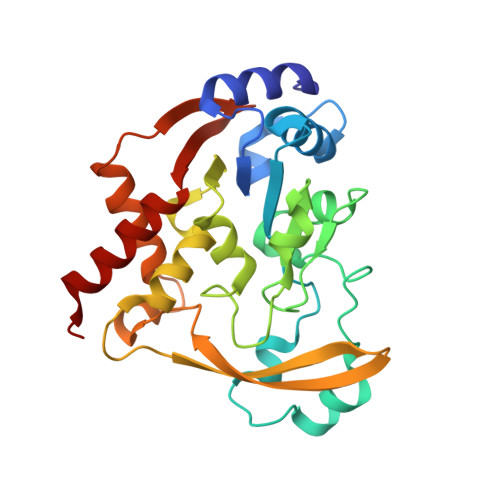Low-Barrier and Canonical Hydrogen Bonds Modulate Activity and Specificity of a Catalytic Triad.
Kumar, P., Agarwal, P.K., Waddell, M.B., Mittag, T., Serpersu, E.H., Cuneo, M.J.(2019) Angew Chem Int Ed Engl 58: 16260-16266
- PubMed: 31515870
- DOI: https://doi.org/10.1002/anie.201908535
- Primary Citation of Related Structures:
6NP1, 6NP2, 6NP3, 6NP4, 6NP5, 6NTI, 6NTJ, 6O5U - PubMed Abstract:
The position, bonding and dynamics of hydrogen atoms in the catalytic centers of proteins are essential for catalysis. The role of short hydrogen bonds in catalysis has remained highly debated and led to establishment of several distinctive geometrical arrangements of hydrogen atoms vis-à-vis the heavier donor and acceptor counterparts, that is, low-barrier, single-well or short canonical hydrogen bonds. Here we demonstrate how the position of a hydrogen atom in the catalytic triad of an aminoglycoside inactivating enzyme leads to a thirty-fold increase in catalytic turnover. A low-barrier hydrogen bond is present in the enzyme active site for the substrates that are turned over the best, whereas a canonical hydrogen bond is found with the least preferred substrate. This is the first comparison of these hydrogen bonds involving an identical catalytic network, while directly demonstrating how active site electrostatics adapt to the electronic nature of substrates to tune catalysis.
Organizational Affiliation:
Graduate School of Genome Science and Technology, University of Tennessee, Knoxville, TN, 37996, USA.
















